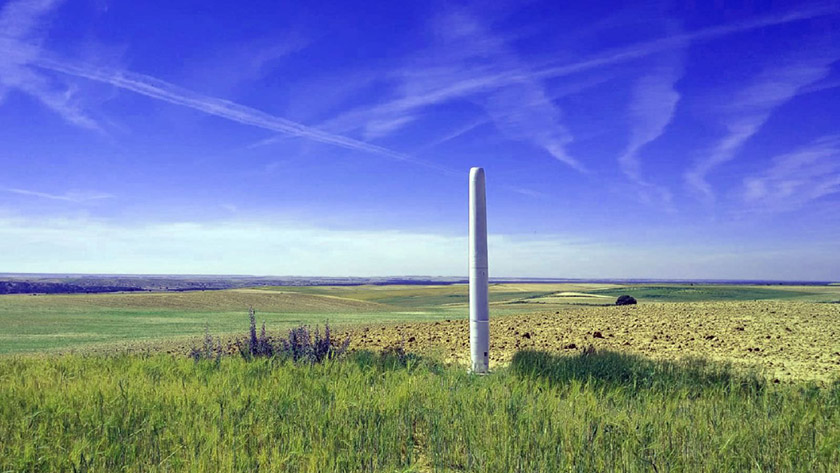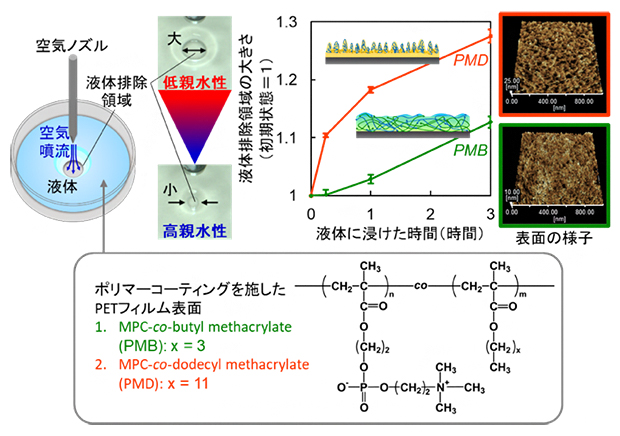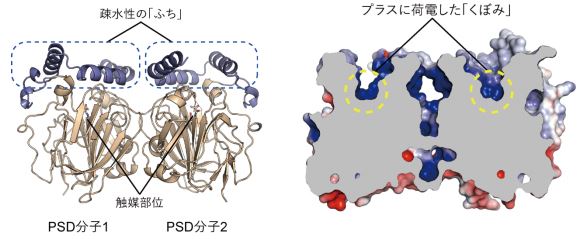(Wobbling in the wind: a bladeless alternative to turbines)
2020/2/24 欧州委員会(EC)

© Vortex Bladeless S.L., 2020
・ EU が資金を提供した VORTEX プロジェクトでは、ブレードの無い風力タービン、「Vortex」について、その開発、最適化と試験を実施中。
・ 同プロジェクトを率いるマドリッドを拠点とする SME Vortex Bladeless が、地域の分散型エネルギー市場に向けて、コンパクトな同ブレードレス風力発電に太陽光発電や他のクリーンエネルギーの発電を組合せた再生可能エネルギーの地産地消の活動に着手。
・ Vortex は細い円筒形で可動部をほとんどもたないため、メンテナンスは最低限で済む。ほぼ無音、設置が容易で場所をとらない。ブレード付きの従来の風力タービンに比して、野生生物への視覚的な影響や効果を抑制する。
・ 空気力学的性能では従来の風力タービンが優れているが、Vortex は風向きの変化に迅速に対応できるため、特に強風が吹く都市環境で注目される。
・ 風を受けてブレードを回転させる代わりに、Vortex は渦励振として知られるプロセスによる共振で発電する。渦励振は建築物等を崩壊させるため、建築家やエンジニアにとって主要な課題だが、Vortexではこれを活用。
・ 風を受けて空気の渦が増大すると、弾性のロッドで縦に繋いだ軽量のガラス繊維製と炭素繊維製のシリンダーがその基部で振動し、この機械的な挙動を交流発電機が電気に変換する。磁石を利用して風速の変化による振動数の変動をダイナミックに最適化し、より効率的に発電する。
・ Vortex の試験の結果では、従来の風力タービンに比して均等化発電原価ベースで約 30%安価に発電できることを提示。これは、設置コストの低いこと、簡易なメンテナンス、また、規模のメリット達成後のより低い原料・製造コストによるもの。
・ Vortex Bladeless は、100 基の商業化前デバイスについて最初の製品試験を完了している。太陽光発電源と組み合わせた分散型の低電力アプリケーションに向けた、高さ 85cm の最も小型の VortexNano のベータテストを本年実施予定。
・ 世界的なエネルギー企業 2 社が関心を示しており、うち 1 社はデバイスのスケールアップの商業的可能性の調査のための共同プロジェクトを提案している。
URL: https://ec.europa.eu/research/infocentre/article_en.cfm?artid=51865
(関連情報)
Voltex Bladeless
URL: https://vortexbladeless.com/
<NEDO海外技術情報より>
The EU-funded VORTEX project addressed this challenge, coming up with an innovative new concept for turbines without blades. Madrid-based SME Vortex Bladeless, which led the project, is now targeting the local distributed energy market, enabling renewable power to be harnessed close to the point of consumption using its compact bladeless wind-powered generators alongside solar panels and other clean energy solutions.
Lacking the spinning blades of conventional wind turbines, Vortex’s designs resemble slender wobbling or oscillating cylinders. The devices have few moving parts, require minimal maintenance, generate little or no noise and, with a small footprint, are relatively easy to install. They should also have less visual impact and effects on wildlife than conventional bladed turbines.
‘We hope to offer people the possibility of harvesting the wind that passes over their roofs or through gardens and parks with devices that are cheaper to install and easier to maintain than conventional wind turbines,’ says Vortex Bladeless co-founder and project coordinator David Yáñez. ‘Although in theory conventional wind turbines have superior aerodynamic performance, bladeless turbines are able to adapt more quickly to changes in wind direction. This is an especially interesting feature in urban environments with turbulent wind conditions.’
30 % cheaper electricity
Instead of using the wind to rotate a blade, the Vortex device oscillates as the air passes around it and vortices build up behind – a process known as vortex shedding. The phenomenon has always been a major challenge for architects and engineers who have to try to mitigate the effect on buildings and other structures.
Conversely, the Vortex technology takes advantage of this phenomenon. As the wind blows and vortices build up, a lightweight fibreglass and carbon-fibre cylinder affixed vertically to an elastic rod oscillates on its base, where an alternator converts the mechanical movement into electricity. Because different wind speeds vary the frequency of oscillation, magnets are used to dynamically optimise the rate of movement for more efficient electricity generation.
Tests suggest that Vortex devices can generate electricity about 30 % cheaper than conventional wind turbines on a levelised cost of energy basis. This is helped by the low cost of installation and minimal maintenance requirements as well as potentially lower material and manufacturing costs once economies of scale are achieved.
‘Our machine has no gears, brakes, bearings or shafts. It does not need lubrication and has no parts that can be worn down by friction. Thanks to being very lightweight and having the centre of gravity closer to the ground, anchoring or foundation requirements have been reduced significantly compared to regular turbines, easing installation,’ Yáñez says. ‘To summarise, we took on the challenge of developing the simplest device imaginable capable of collecting energy from the wind.’
Testing in the air
A significant amount of the development, optimisation and testing needed to achieve that goal was carried out in the VORTEX project.
‘The day the European Commission granted us the funding we were about to negotiate the sale of our technology to Asian investors at a very low price. Thanks to EU help and support, we were finally able to develop the technology in Spain and we hope that we can soon return that effort for the benefit of all European citizens,’ he says.
Today, Vortex Bladeless is concluding a ‘minimum viable product’ test of its first 100 pre-commercial devices and plans to begin beta testing its smallest device, the 85cm-tall Vortex Nano this year, targeting distributed low-power applications in combination with solar energy sources. The firm has also garnered interest from two of the largest wind energy companies in the world, one of which has proposed launching a joint project to explore the commercial feasibility of scaling up the devices.
‘From an environmental perspective, the superiority of renewable energy over non-renewable sources is unquestionable, but the next challenge is generating this energy near the point of consumption, from your own home, for example,’ Yáñez says. ‘It’s clearly essential that we have as many tools as possible to deal with climate change. Each of them will have unique characteristics that make them suitable for specific circumstances.’
Project details
Project acronym: VORTEX
Participants: Spain (Coordinator)
Project N°: 726776
Total costs: € 1 899 357
EU contribution: € 1 328 687
Duration: June 2016 to November 2018



